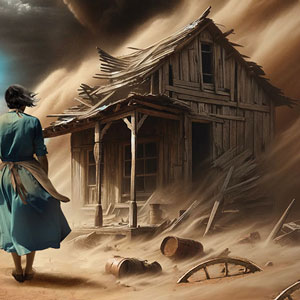
 *** “This Bitter Earth” is a two-character play, written by Harrison David Rivers, that focuses on the dynamics of a gay interracial couple in a committed relationship. This intimate portrait has to do with how these two men from very different circumstances internalize well-publicized incidents involving police brutality and the killings of several African Americans that have led to the eruption of major public protests in U.S. cities. The script gives us a glimpse of how such relatively recent historical events affect the couple’s rapport with each other.
*** “This Bitter Earth” is a two-character play, written by Harrison David Rivers, that focuses on the dynamics of a gay interracial couple in a committed relationship. This intimate portrait has to do with how these two men from very different circumstances internalize well-publicized incidents involving police brutality and the killings of several African Americans that have led to the eruption of major public protests in U.S. cities. The script gives us a glimpse of how such relatively recent historical events affect the couple’s rapport with each other.
Jesse (Matthew Lolar-Johnson) and Neil (Tiemen Godwaldt) first meet in a gay bar on Christopher Street, in the West Village of Manhattan. Jesse, a middle-class black man, attends Columbia University and wants to pursue a career as a writer and actor. While he is very interested in the accomplishments of black people, he just wants to go on with his life. His telling monologue is his description of his family being much like the Huxtables on “The Cosby Show.” He states, “For once, they depicted people like me on national TV.” Neil, in contrast, is a white left-liberal activist in the Black Lives Matter movement and is heavily involved in political protests. Whereas Jesse comes from the Baptist tradition and his parents live in the South, Neil comes from a very wealthy family in the North. Despite their differences in background, interests, mindsets, and, of course, skin color, Jesse and Neil become an item and move in together. While Jesse is apathetic about politics, Neil constantly takes to the streets to complain against injustices. Although they first meet in 2012, the focus of this story tends to be on the years 2014 and 2015, starting with the killing of Eric Garner by New York City police in Staten Island. Neil intends to protest with the name of Treyvon Martin on his lips. While Neil encourages his lover to join him at the rally, Jesse chooses not to do so. Shortly afterwards, Neil follows Jesse to Minnesota, where Jesse has gotten his first teaching job after graduate school. While the two live there together, the killing of Michael Brown makes headlines together with the protests that occur in Ferguson, Missouri, and elsewhere. Now Neil wants to travel south to support the Black Lives Matter cause. He insists that Jesse develop a stronger sense of political awareness and travel with him. Again, Jesse refuses.
We watch how the sequences of killings and subsequent protests impact Jesse and Neil’s relationship, which is sometimes great and sometimes rocky. We witness their arguments, largely having to do with their expectations of each other, combined with a lack of understanding of the other’s past experiences and priorities in life. The existence of racial injustice hits home for both of them in different ways and at different times. Plus, since both men are gay, they each have to deal with additional discrimination against them for simply being who they are and being a loving couple.
The narrative is told via a series of flashbacks and flashforwards from Jesse’s perspective. We watch how Jesse constantly reevaluates the type of relationship he has with Neil, with the most important aspect being the deep love and affection the two have for each other despite their disagreements. Apparently, a white loving partner has gotten under Jesse’s skin and has made a substantial impact on him: teaching him about shelving his political apathy and adopting a socially conscious activism. Yet, the timeline of this script becomes somewhat confusing. There are moments when the audience doesn’t know whether we’re dealing with events in real time or watching memories of earlier events or observing Jesse’s imaginings of how things could have been in the past—or could be in the future. For example, why does Jesse create the fiction that the two men first met at a coffee shop when he clearly reiterates that they met at a gay bar? Moreover, there is a bit too much repetition when Jesse revisits his strong feelings for Neil, even though this is in keeping with watching him retool his perspective on life and eventually view things from the vantage point of the other.
The striking mural on the back of the stage is the first thing we notice as we take our seats. Originally designed by black visual artist Jean-Michel Basquiat, these panels are intended to evoke the importance of the Black Lives Matter movement and a unique African American culture. However, considering the timing of the performance, the painting feels more reminiscent of Hispanic folk art recently created for Halloween or the Day of the Dead. We see skulls and black silhouettes that look almost like skeletons and vicious dogs baring nasty teeth as well as less scary themes, such as math and chemistry problems and references to Dadaism, an art movement which considers itself “the ultimate political tool to smash existing power structures and artistic norms.”
The lighting in this show is relatively simple but nicely colorful and incredible, thanks to the fine work of David Goodman-Edberg. On stage, four large differently shaped and lighted frames are suspended from the ceiling throughout the entire performance, making the directing by Tim Rhoze interesting and unusual. The characters find themselves surrounded by different frames and portions of frames, adding to the impression that their relationship is confined within boundaries. Sometimes the actors have to step over the lighted bars, while at other moments the frames swing, depending on the message that the script advances at a given moment. Props are minimal: mostly consisting of wooden crates painted in black and being used as furniture like a bed and chairs. The rectangles formed by both the frames and the crates allow the audience to imagine vastly different settings. This is cleverly done, and scenes progress smoothly. Sound design by Kara Roseborough could not be any better.
When I first read the title “This Bitter Earth”, I thought about a farm during the Great Depression where the harvest has failed. My second thought was about a war-torn country, where bombs have been dropped; the earth has been ravaged; and people are starving and homeless. Unfortunately, nothing in this show has to do with earth or the Earth, except in the most figurative sense. Having a title like “These Bitter Tears” or something similar would have been more apt.
“This Bitter Earth” is playing through November 12, 2023, at the Fleetwood-Jourdain Theatre, in the Noyes Cultural Arts Center, 927 Noyes Street, in Evanston.
Tickets are $30.
For a limited time, use the code: FJT2023 when purchasing tickets online for a $10 discount per ticket.
Performance schedule:
 Saturdays at 7:00 p.m.
Saturdays at 7:00 p.m.
Sundays at 3:00 p.m.
For more information and to purchase tickets, visit www.fjtheatre.com or or call 847-866-5914.
To see what others are saying, visit www.theatreinchicago.com, go to Review Round-Up and click at “This Bitter Earth”.






More Stories
“Turret”
“Black Sunday”
“An Educated Guess” Reviewed by Julia W. Rath